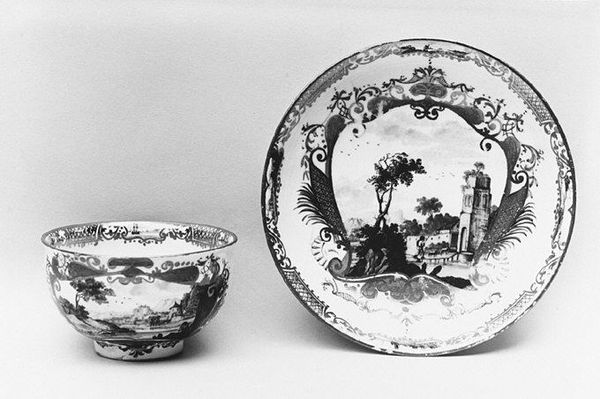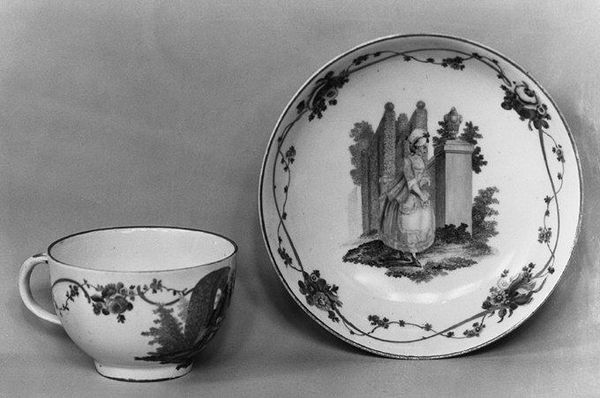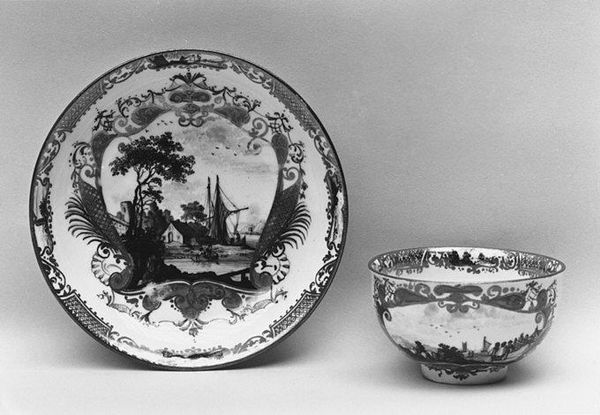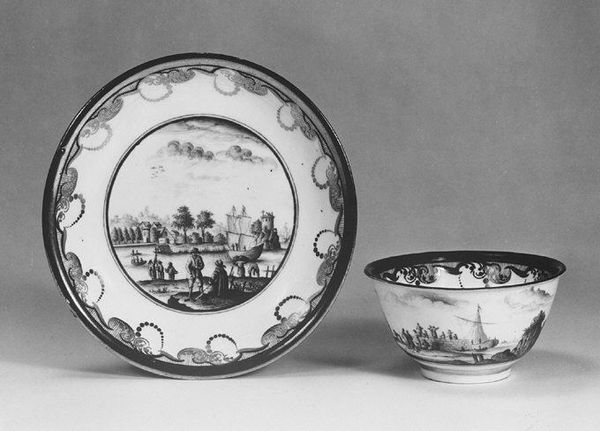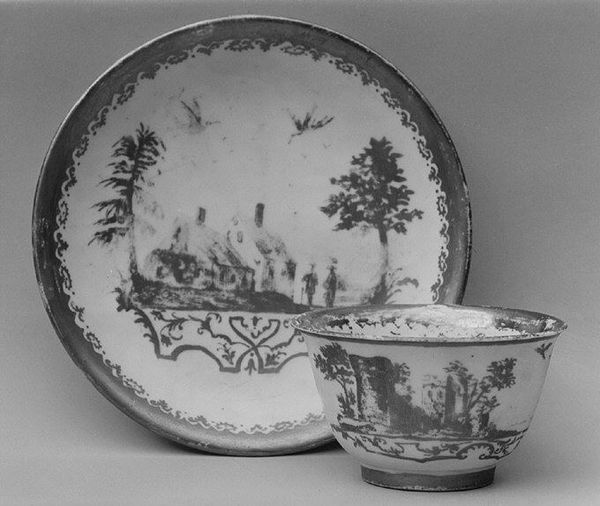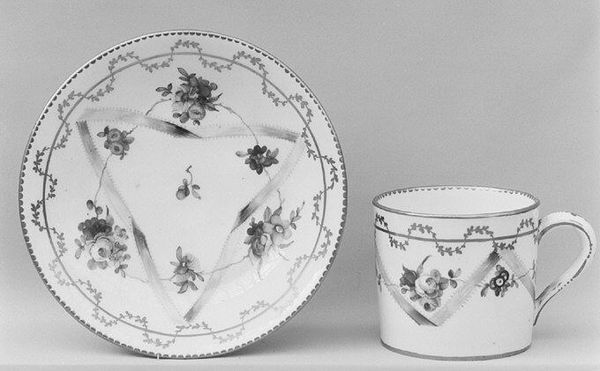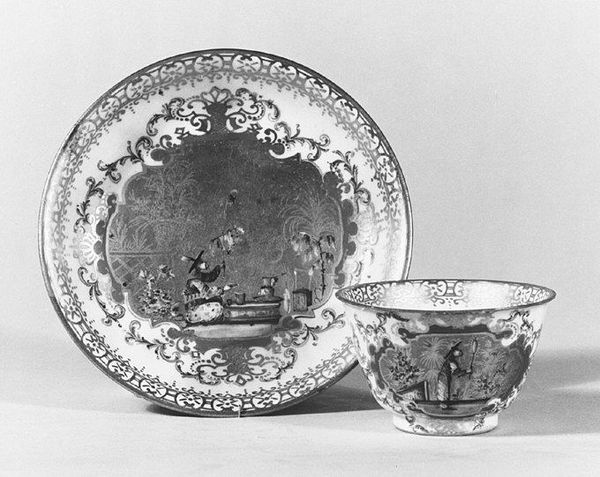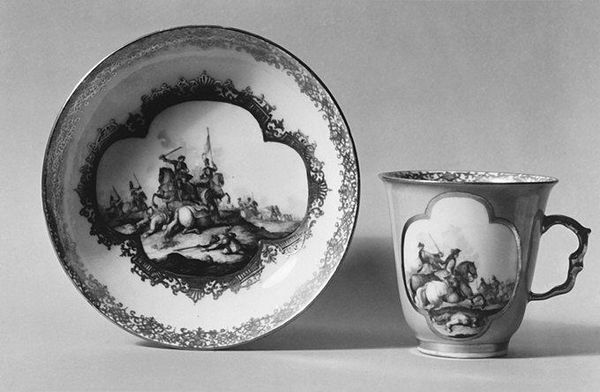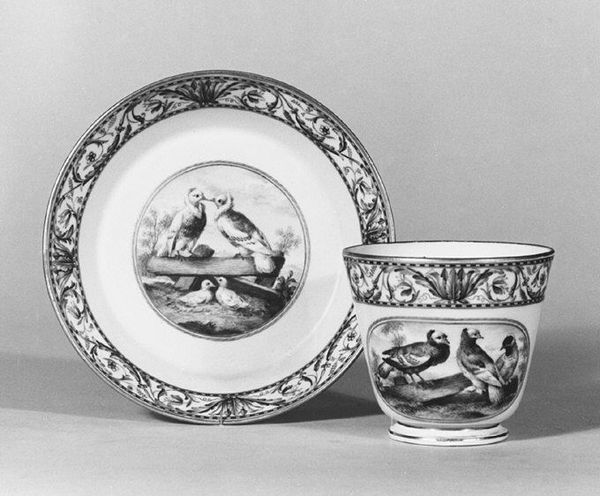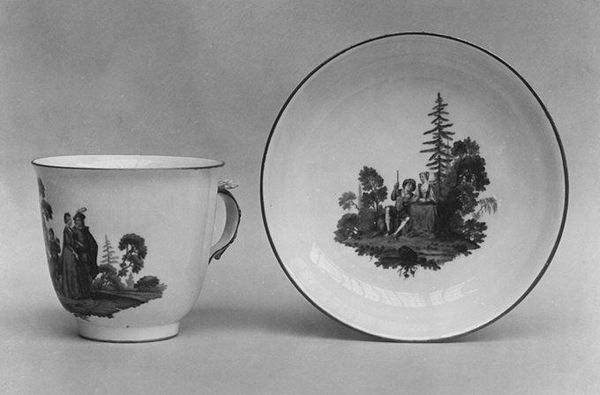
ceramic, porcelain, sculpture
#
landscape
#
ceramic
#
porcelain
#
sculpture
#
genre-painting
#
decorative-art
#
rococo
Dimensions: Height (Cup (.10a)): 3 1/8 in. (7.9 cm); Diameter (Saucer (.10b)): 5 1/8 in. (13 cm)
Copyright: Public Domain
Curator: Standing here before this "Cup and Saucer" made by the Meissen Manufactory between 1735 and 1745, you are witnessing a fine example of Rococo decorative art, housed here at the Metropolitan Museum of Art. The detailed landscape is classic of the period. Editor: It feels so fragile, doesn't it? Like a whispered secret from another era. The black and white scene gives it a wistful, almost haunting quality. I imagine a gentle hand delicately holding this cup centuries ago. Curator: Exactly. This porcelain piece embodies the aspirations and the aesthetics of its time. Notice how the detailed production suggests wealth. The landscape decoration is meticulously painted and would've involved a significant amount of artisanal labor and high level craftsmanship. Editor: Yes, and consider the landscapes depicted! I see little figures enjoying a bucolic outing, while a decorative vine and flower motif lines the edge. These objects, mundane as their purpose seems, offered small glimpses into a life of cultivated leisure and access to beautiful objects for elite patrons of the arts. It makes me wonder about the individuals who created these pieces – their hands, their stories. Were they recognized artists or anonymous artisans toiling to fulfill royal tastes? Curator: That's the core of it, isn’t it? The material conditions of production intertwine with the intended consumption. Meissen was at the forefront of porcelain production in Europe, essentially replicating and then innovating on Chinese porcelain, with significant implications for trade and artistic exchange. We cannot forget how technology changed to meet consumerism, Editor: It is fascinating how this seemingly simple cup and saucer can act as a looking glass onto such a complex past of courtly pleasure, technological competition, artistic labour. In that sense, what better vessel for thought? Curator: Absolutely. Examining such works can indeed provide rich insights into the networks of production, consumption, and aesthetic exchange in 18th-century Europe. Editor: To me, seeing them here – almost ordinary looking, despite its beauty – makes all the history feel so much closer and personal.
Comments
No comments
Be the first to comment and join the conversation on the ultimate creative platform.
